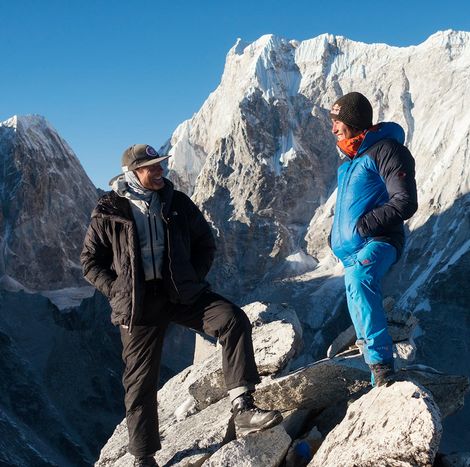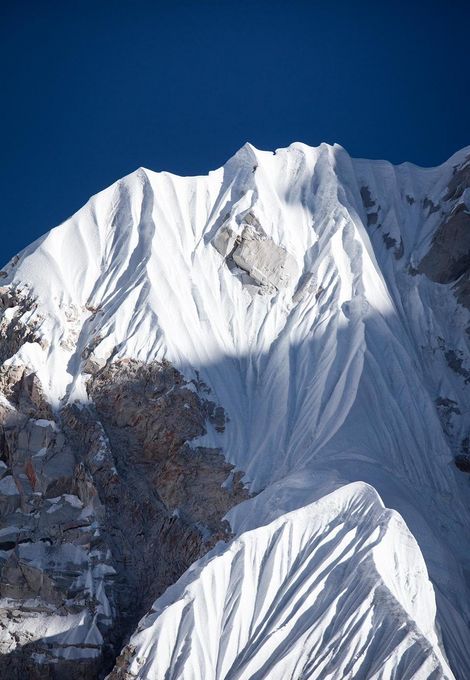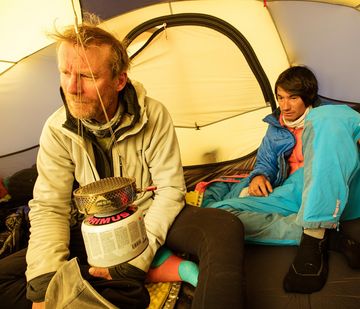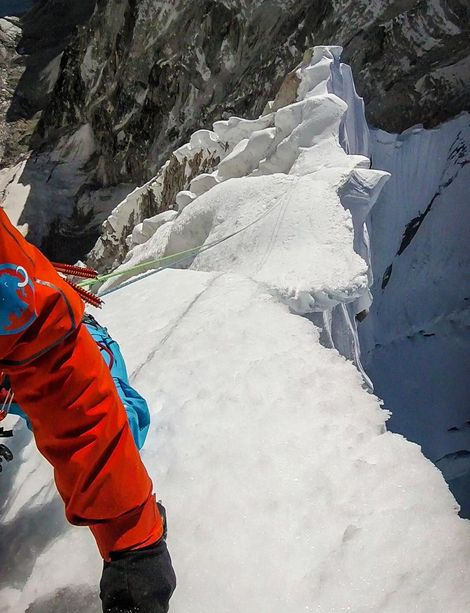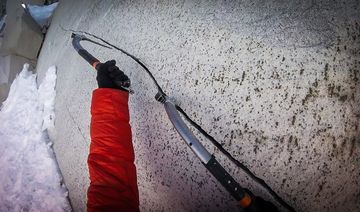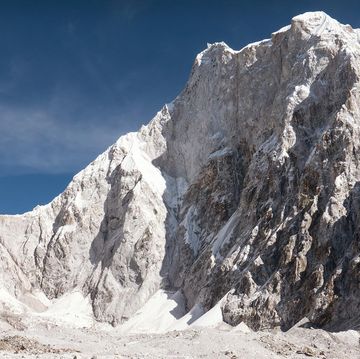Close, but no cigar: Lunag Ri (6907m)
When my parents and I arrived in Phaplu, my Dad’s home village, it marked my first return to Nepal in 15 years. Mostly because of the earthquake in April and May, much had changed: Even the house in which my Dad had grown up, which was inhabited by only my uncle, had been partly destroyed. Many other houses in the village had suffered a similar fate. Phaplu has an airport and it can be reached by car, which is why there had been good progress with the reconstruction of the village compared to more remote villages. Still, many people had left the region and moved to larger cities in the hope for a better future.
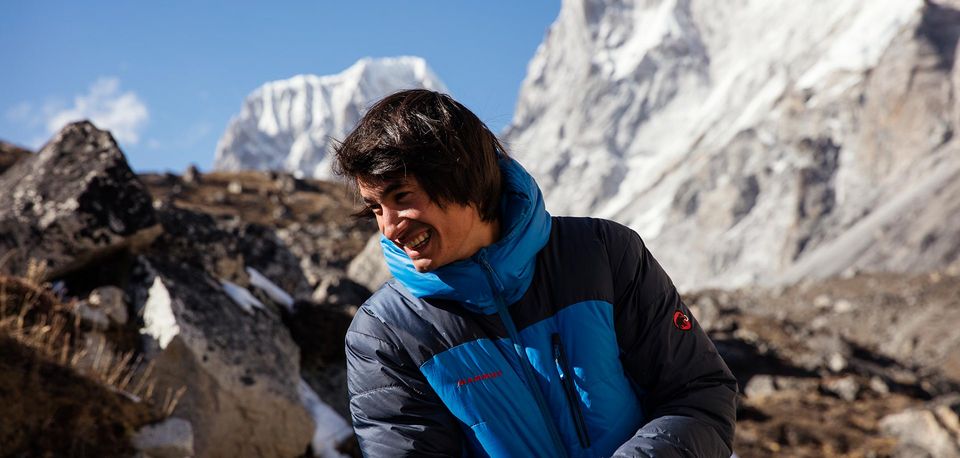
Even though I had been to Nepal with my parents three times as a child, I had virtually no tangible memories prior to my departure. And yet, when we arrived in Phaplu, I recognized many things: Songs that the school children sang as they walked along the street, the smell of the spices in the food, and also the faces of my relatives. It was a memorable experience to see how memories went from being distant to coming alive and being present.
I had wished to return to Nepal for quite a while. Visiting the family was only supposed to be one reason for the trip. The second reason was – what else could it be – a mountain. My goal of choice was the first ascent of Lunag Ri (6.907 m): The combination of an untouched summit and interesting climbing is unusual – often enough, virgin summits are not too challenging from a climbing perspective. Lunag Ri is very difficult from all sides. This claim is supported by the fact that many expeditions have tried their luck on this peak. Some got closer than others, but in any case, no one had yet reached the top. Conrad Anker and I planned to ascend the mountain via its northwest face.
From the start, everything went perfectly. The approach to basecamp took several days and led us over the 5417 m high Renjo La pass. Excellent weather accompanied us into basecamp. After resting there for a day, we headed up to the base of Lunag Ri to set up an advanced base camp, and also to have a closer look at the face to find the most promising line to the summit.
Our original plan had been to climb an ice ramp up the northwest face for as long as possible before traversing below the headwall to reach the north west ridge, which would hopefully allow passage to the summit. We immediately saw that the ramp was in very dry conditions with high risk of rock fall. Conrad was not too keen to take such a risk and preferred to tackle a more difficult line on the left, along which we would reach the ridge at its lowest point. His doubts made sense to me and a new plan took shape: We would climb a steep rock face to the northwest ridge and follow it as far as possible before bivying. We planned to reach the summit on the next day.
We returned to basecamp and acclimatised on nearby Fox Peak (5.777 m). After a clear night on the exposed summit, and even though only two weeks had passed since our arrival in Kathmandu, we felt ready for an attempt on Lunag Ri.
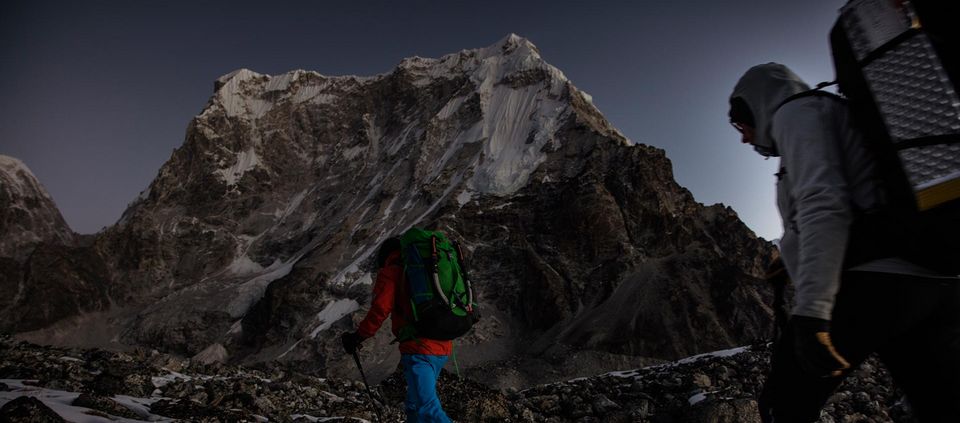
At the base of the wall, it dawned to us that it would be quite the challenge to even reach the ridge.
There was also some time pressure because once the sun hit the wall, the upper part would be a dangerous rockfall zone, or “Hell’s Kitchen”, as Conrad dubbed it. On the first pitch, steep, extremely loose rock spiced up with black, candle-wax-like ice awaited me. I even had to take off my backpack to overcome an awkward chimney. The terrain remained difficult. In the early afternoon, we reached the ridge, which kept us on our toes with bad protection, steep, bottomless snow and complex route-finding. In return, it rewarded us with spectacular exposure.
As it got dark, Conrad climbed the last couple pitches to our bivy under a big rock. A small crevasse served as a shelter after we spent a few hours digging to make it a bit larger. We ate a few stripes of Buffalo Jerky that Conrad had brought from Montana. Apart from one energy bar, it was the only food we had eaten since leaving camp in the morning. After as short, nearly sleepless night, we continued at 2 am.
As we were expecting only one more day of bearable conditions before the weather would deteriorate, we left our bivy gear behind and tried to reach the summit as fast and light as we could. The terrain continued to be demanding in every way.
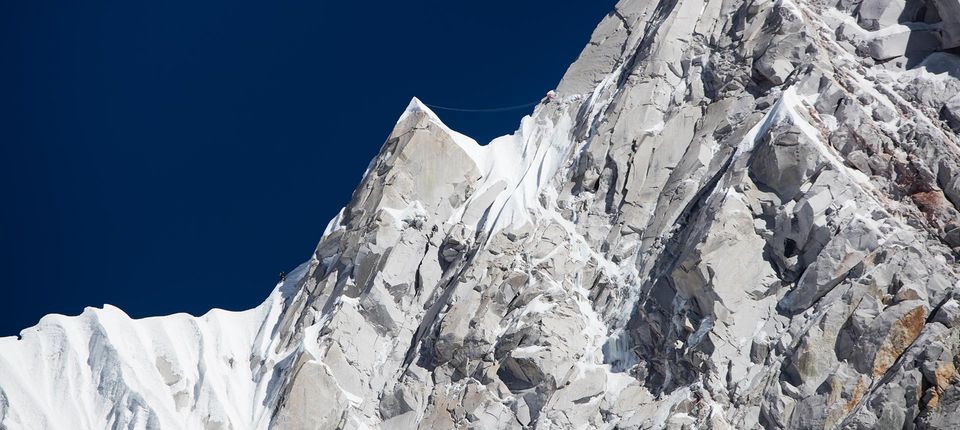
In about 12 hours we continued along the tricky ridge until only the headwall separated us from the summit, 300 meters above. The granite was much better than below and in parts, the climbing was amazing. But at that point, it was time to put into words what both of us had feared for a long time: The summit was out of reach that day, and one or maybe even two open bivies without a sleeping bag or tent in temps below -25 °C and strong winds seemed too risky. We would put at stake far more than just our fingers and toes if we spent the night in the open at this altitude. Even though the decision didn’t feel easy, we agreed: Retreating was our only reasonable option.
Rappelling along the ridge proved toilsome and extremely difficult. There were virtually no anchors to be found on the ridge. Rappelling straight down the face was also out of question and so we were forced to deal with a mixture of rappels, down climbing, and traversing. It was only late at night that we reached our bivy gear that provided at least a little shelter from the intense cold.
On the next day, we had to rappel through Hell’s Kitchen – we waited until the sun had left the face and the rock fall became less. Back at the base, we had left behind almost our entire rack and were completely spent. We had given all we had in store in three days on the mountain.
We had not reached the summit; otherwise our climb would have been one hundred percent perfect. In turn, we still had our fingers. On the way down, we warmed them in our pockets. They will surely be useful on our next attempt. We have set our sights on Lunag Ri, round two, for next year.
